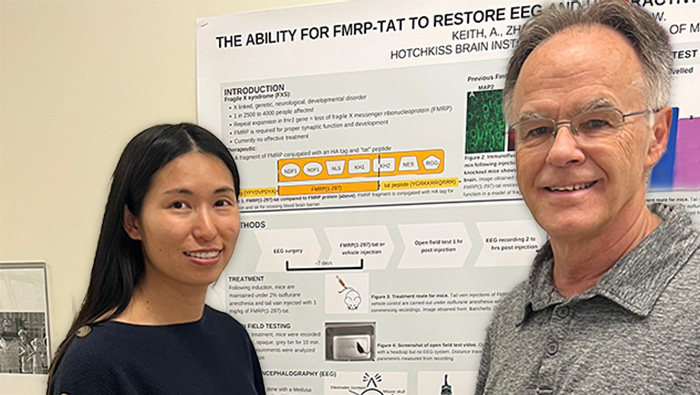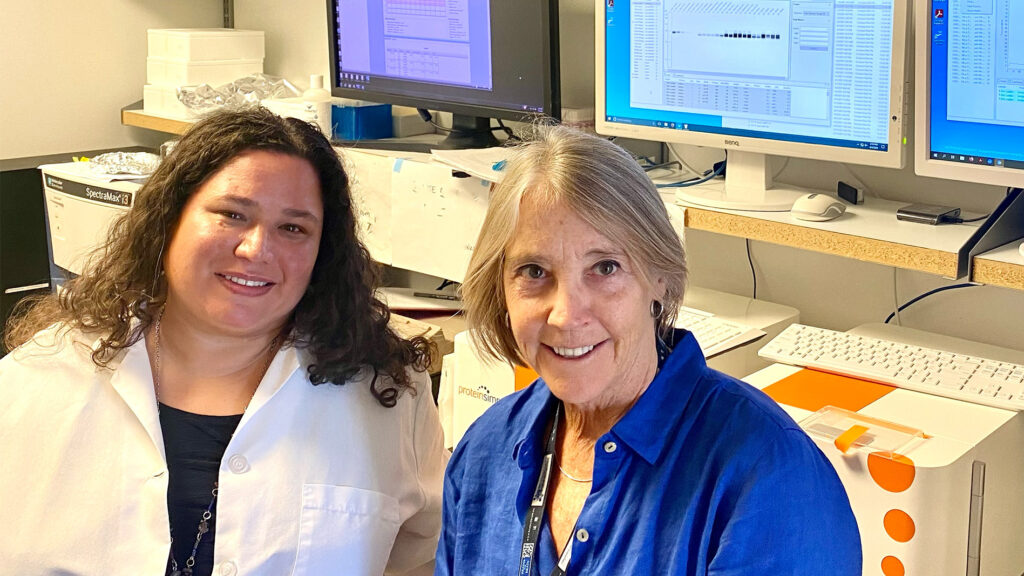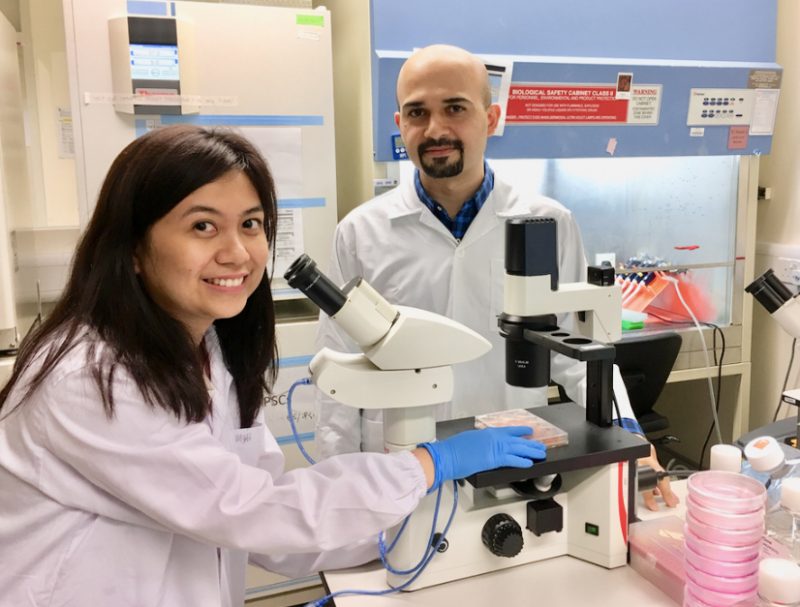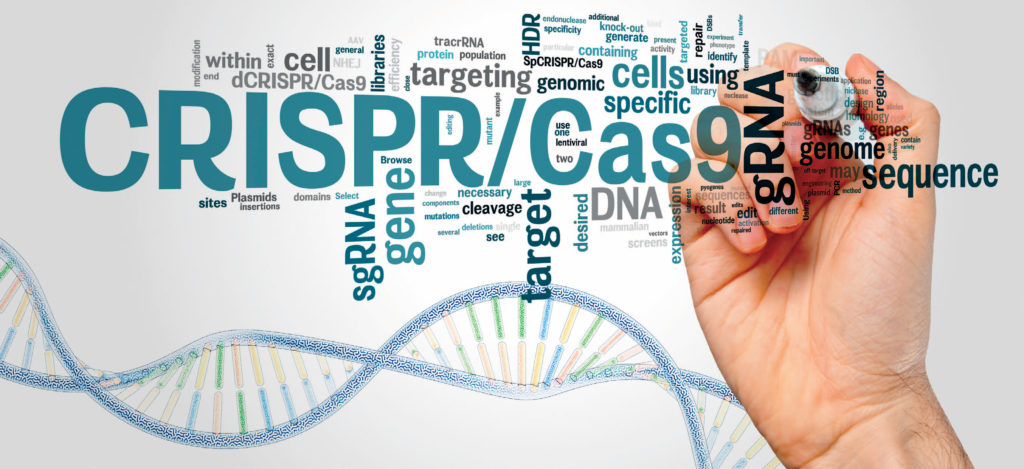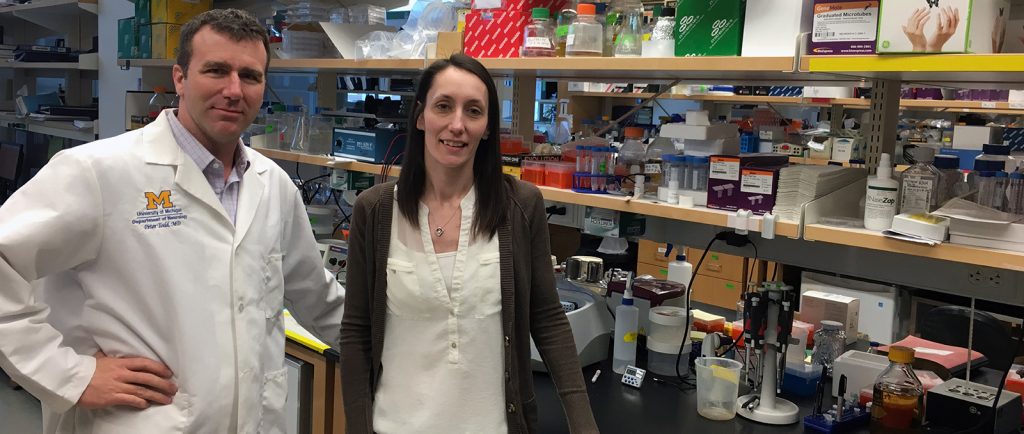Identifying New Therapeutic Approaches Using a Human Fragile X Model
Human Fragile X syndrome model research identifies new therapeutic approaches by revealing how FMRP loss affects human neurons and brain circuits.
Gene Therapeutic Development for Fragile X Syndrome
Dr. Lee’s team is testing RNA editing gene therapy for Fragile X, aiming to repair FMR1 RNA and restore missing protein — targeted, reversible, promising.
Validate a Novel Antisense Oligonucleotide Therapeutic for Fragile X Syndrome
FRAXA funds Quiver Biosciences to validate a novel antisense oligonucleotide (ASO) therapy for Fragile X syndrome, targeting the root cause of the disorder.
ASO Rescue of FMR1 Mis-Splicing in Neurons and Mitigation of Fragile X Deficits
A new FRAXA grant funds UMass Chan researchers using ASOs in neurons and organoids to correct FMR1 mis-splicing and restore critical FMRP protein.
Modeling R-Loop Therapy for Fragile X Syndrome in Patient-Derived Brain Organoids
Fragile X syndrome researchers model R-loop therapy in patient-derived brain organoids to restore FMR1, accelerating a curative approach supported by FRAXA.
A Tat-Conjugate Approach to Treat Fragile X Syndrome
Turner Lab’s innovative approach to treating Fragile X uses a Tat-linked, truncated FMRP protein designed to restore brain function by replacing the missing protein.
Gene Editing of FMR1 to Correct FXS Phenotypes in Mice
This team is testing cutting-edge gene editing tools to correct Fragile X mutations in the brain using an advanced new mouse model.
Reactivating the FMR1 Gene to Reverse Fragile X Syndrome
This project aims to reactivate the FMR1 gene to combat Fragile X Syndrome, with the goal of restoring vital protein function. This work is now funded by a new FRAXA grant.
Antisense Oligonucleotides (ASOs) to restore FMRP in Human Fragile X Cerebral Organoids
Explore Dr. Richter’s encouraging results with ASOs for Fragile X syndrome. A $100,000 grant now fuels pivotal studies needed to advance toward ASO therapy.
mRNA Therapy for Fragile X Syndrome
Dr. Kathryn Whitehead helped develop the science behind the COVID-19 vaccines. Her team adapted this technology to deliver the Fragile X mRNA to brain cells.
Genome-wide Screen for FMR1 Reactivation in Human FXS Neural Cells
This team aims to turn the FMR1 gene back on in Fragile X by identifying factors that reactivate the silenced gene and restore production of the missing FMRP protein.
Gene Therapy Translational Studies for Fragile X Syndrome
With FRAXA funding, researchers tested AAV gene therapy to restore FMRP in Fragile X mice, measuring safety, effectiveness, and brain activity to inform future trials.
Reintroducing FMRP via Tat to Reduce Symptoms of Fragile X Syndrome
A FRAXA-funded team found that a shortened FMRP protein, delivered with a Tat “carrier,” restores brain signaling and improves behavior in Fragile X mice.
Can CRISPR Cure Fragile X Syndrome?
CRISPR/Cas9 was used by MIT researchers to remove the molecular tags that keep the mutant gene shut off in Fragile X syndrome neurons and resulted in some of them producing protein normally. Much work is being done right now, with exciting new discoveries coming at a fast and furious pace.
CRISPR Reactivation of the Fragile X Gene
“We are trying to target the first event that goes wrong in Fragile X syndrome”, says Todd, “One reason our previous attempts to develop treatments for Fragile X syndrome have failed is that they’ve tried to target the downstream effects of losing the Fragile X protein. The protein does many things… bypassing all the functions that it normally takes care of has proven difficult from a pharmacologic perspective.”
Targeted Transcriptional Reactivation of FMR1 in Fragile X Syndrome Stem Cells
FRAXA funded Dr. Peter Todd to use CRISPR to reactivate FMR1. Published results confirmed restored gene expression, a big step toward disease-modifying therapy.
Investigating Gene Reactivation to Treat Fragile X Syndrome
With a $180,000 grant from FRAXA Research Foundation, Dr. Jeannie Lee and her team at Harvard are working to reactivate the gene that is silenced in Fragile X syndrome.
The X Factor – Turning on X Chromosome Genes to Treat X-linked Disorders
Harvard researcher Jeannie T. Lee, MD, PhD, moves closer to turning on select genes on the X chromosome to treat people with X-linked disorders.
Small Molecules To Target r(CGG) Expansions to Treat Fragile X Syndrome
FRAXA-funded scientists created small molecules that target the CGG repeat “off-switch” in Fragile X, aiming to restore the missing FMRP protein at its source.
Developing IPS cells to Screen Drugs which can Reactivate the FMR1 Gene
This project developed human stem cell and mouse models to test FMR1 gene reactivation in the brain, advancing future gene therapy strategies for Fragile X.
Reactivating the FMR1 Gene
With $171.6K from FRAXA, Dr. Andre Hoogeveen’s Erasmus team developed methods to reactivate the Fragile X gene, advancing curative research.
FMR1 Gene Delivery Using Herpes Simplex Virus Vectors
With $89K from FRAXA, Dr. David Bloom’s team advanced Fragile X gene therapy by transferring the fmr1 gene into mouse brains via viral vectors.
Prospects For Gene Therapy in the Fragile X
FRAXA-funded Dr. Rattazzi explored gene therapy to transfer the FMR1 gene into the brain of Fragile X mice, publishing key results.
FMR1 Gene Regulation
FRAXA-funded Dr. Paul Hagerman explored reactivating the FMR1 gene and measuring its expression to advance Fragile X treatment.






